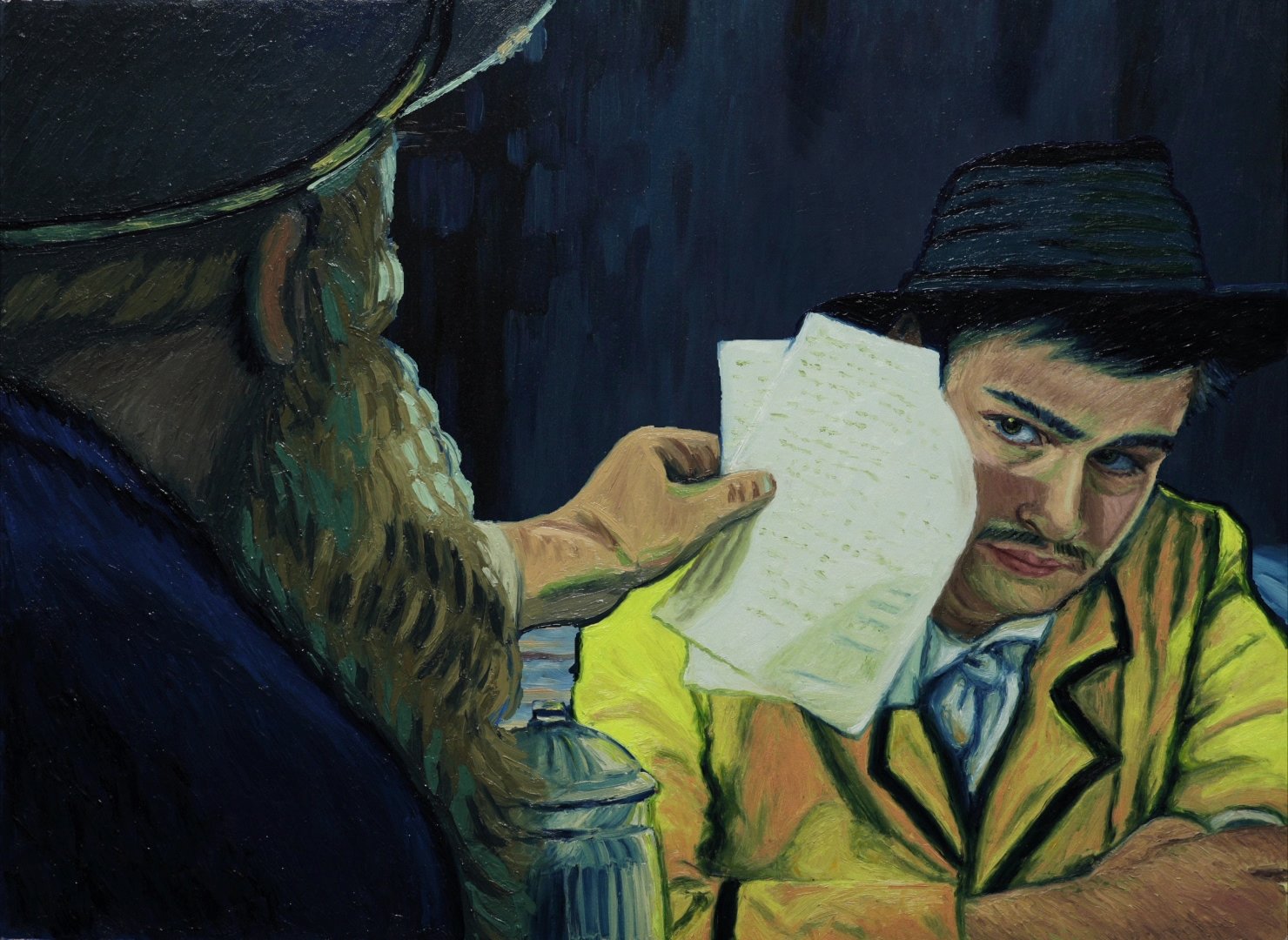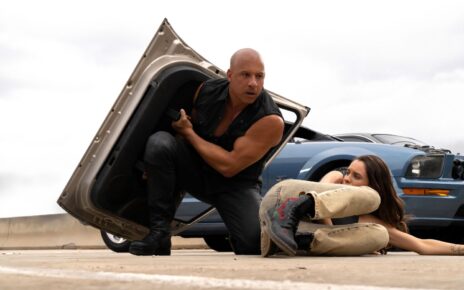Did Vincent van Gogh commit suicide? Or was his personal instability slandered by that big liar History based on flimsy evidence like the fact that he once gifted his self-severed ear? Loving Vincent thinks the man’s reputation has indeed been tarred and investigates the last days in a fashion you cannot believe until you see it – every single frame of this film has been hand painted in Post-Impressionist Vincent van Gogh style. The result is, look, I want to call this “eye candy,” but that phrase undersells this feast; as candy goes, this picture is like a child awakening in Wonkaland.
One year after Vincent’s death, his friend Armand Roulin (voice of Douglas Booth) was still unsatisfied with the “suicide” storyline. Who shoots himself in the stomach? So … Curious Armand, a.k.a. the man in the yellow suit, dropped his job and dragged himself up to Vincent’s deathplace, Auvers-sur-Oise, on the flimsy premise of delivering a VvG letter posthumously. It wasn’t going to be easy after all this time; finding the truth behind Vincent’s death would be like finding a needle among oiled Haystacks.
This is where the movie comes to life, as the portraits of the local townsfolk, correction, Vincent’s portraits of the local townsfolk, narrate Vincent’s demise. Was the innkeeper Louise Chevalier (Helen McCrory) involved? Was Vincent in love with Marguerite Gachet (Saoirse Ronan) or did he just like keeping company with her father, both peer and frenemy, Doctor Gachet (Jerome Flynn)? While the animation of Vincent’s color portraits is awesome, the film sells itself alone with the black and white recreations of past events. This artwork is on another level, which makes a gorgeous film even more striking — if that were at all possible.
And what about Vincent himself? What possessed him to cut off his own ear, or write to his brother Theo six times a day all signed Loving Vincent? Of course, it took a lot more to make a selfie in the 1880s, but My Brother Vinny was up to the task, painting 30 in four years (although there’s no count of how many anonymous dick pics h e may have painted and sent during that time). In the very least, my knowledge of Vincent van Gogh, which until this film had been 80% derived from Peanuts cartoons, and my desire to know more about his life and death, increased significantly upon the watch. I call most any film that makes you want to know more a success.
e may have painted and sent during that time). In the very least, my knowledge of Vincent van Gogh, which until this film had been 80% derived from Peanuts cartoons, and my desire to know more about his life and death, increased significantly upon the watch. I call most any film that makes you want to know more a success.
The mystery in Loving Vincent is B-/C+ stuff, better than middling, but far from genius. Whatever the screenplay lacks, however, the cinematography more than compensates. This is the most visually evocative film since the original Sin City. It didn’t come easy; the production company employed over 100 artists to create this stunning film; I’d be very surprised if the receipts justify the labor, but that hardly matters. I’d love to see this kind of film again one day.
Vinny van was a pro of depression
And used oils to give life expression
Did the man auto-hose?
In style most morose
Here’s hoping I didn’t get the wrong impression
Rated PG-13, 94 Minutes
Director: Dorota Kobiela & Hugh Welchman
Writer: Dorota Kobiela & Hugh Welchman & Jacek Dehnel
Genre: Art!
Type of being most likely to enjoy this film: Impressionist fans
Type of being least likely to enjoy this film: Those who only appreciate animation in Shrek form



